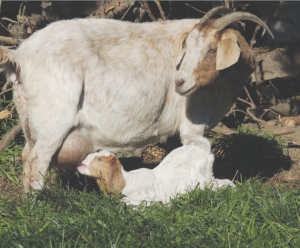Researcher Susanne Waiblinger from the University of Veterinary Medicine’s Institute of Animal Husbandry and Animal Welfare in Vienna, Austria, came to this conclusion after investigating the social behavior and levels of stress hormones in 32 young goats after they were placed in a new herd.
Half the animals were introduced during the dry phase when the herd and replacements were pregnant and not in milk.
The other half was introduced shortly after parturition/kidding when mothers were nursing kids.
Waiblinger found the newly introduced goats experienced markedly less social stress in flocks with lactating mothers and kids. In dry herds, the newcomers were frequently confronted with aggressive social behavior.
Goat herds have a strictly hierarchical social structure and changes in herd composition can lead to serious rivalries and increased aggressive behavior. Reducing stress is important for the sake of the animals, and because stress often results in lower milk production.
Waiblinger says the difference in reaction she found may have a simple physiological explanation.
“We think the oxytocin system is activated in the presence of kids. Oxytocin is released during childbirth, suckling and other positive tactile contact in mammals and acts not only as a bonding hormone but also calming, pro-social and stress-reducing. Thus, it is less likely that there will be aggression between the goats.”
Once the young goats have been introduced to the herd, they appear to prefer the company of goats of the same age rather than adult and unknown members of the herd.
“The social and exploratory behavior in a herd is a reliable indicator of the stress experienced by the animals,” Waiblinger says.
“When less stressed, goats are more likely to try to become acquainted with unfamiliar adults. Stressed goats prefer to surround themselves with well known peers.
“It will be interesting to see whether it is the presence of kids or the mother lactating, that plays the crucial role in stress reduction.”

















